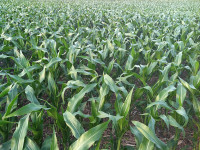 Scott Sines, ©The Green Rocket News
Scott Sines, ©The Green Rocket News
Sailing beneath the popularity of the locavore/locally sourced food efforts are billions of U.S. dollars spent on food aid to foreign countries. The largest supplier of food aid programs in the world, the U.S. uses the same antiquated agricultural and shipping practices that led to the locavore/locally sourced food efforts in the first place.
Crops for foreign food aid are grown in the U.S., stored for long periods of time then shipped around the globe by multi-national companies. Meanwhile, there are countries much closer to food aid recipients that could produce the same food cheaper, cut shipping costs and aid in economic development. The cost savings could be re-invested in providing more food to people in need, which was the goal of food aid in the first place.
So, why do we not practice abroad what we preach at home? Because big agri-businesses and international shippers depend on it. Read it here.

















